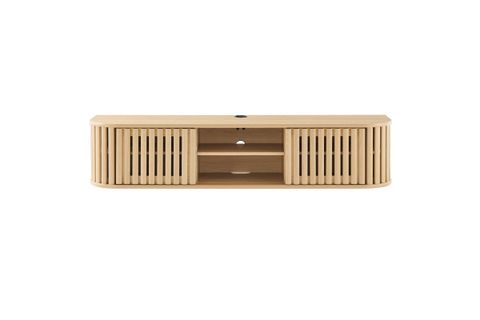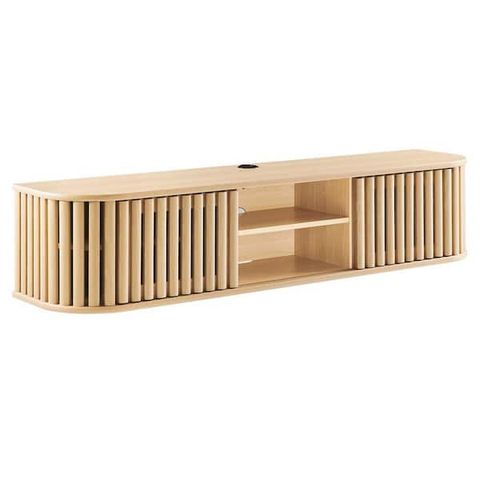Picture this: You walk into a room and see a sleek television mounted high on the wall, taking up no floor space whatsoever. No bulky stands, no cluttered entertainment centers, just clean lines and maximum room efficiency. That’s the power of wall-mounted television solutions. It’s not just about saving space – it’s about creating a new relationship between your TV and your living environment.
We’ve all been there. You move into a new place, excited about your fresh start, only to realize that your new living space has limited room for a traditional TV setup. The corner of the room is too small for a big screen, or maybe you’re dealing with a tiny apartment where every square inch matters. What if you could have your favorite shows and movies displayed beautifully while freeing up precious floor space? Enter wall-mounted television solutions. These clever setups aren’t just trendy – they’re practical, smart, and increasingly essential for modern living. Whether you’re working with a cramped studio, a cozy bedroom, or a spacious living room that needs some reimagining, mounting your TV can be the game-changer you never knew you needed.
The Foundation of Space-Saving TV Mounting
Before diving into the specifics, it’s important to understand what makes wall-mounted TV solutions so effective. At their core, these systems eliminate the need for traditional TV stands and entertainment units that often consume valuable floor space. Think about how much room a typical 55-inch TV with its stand takes up – roughly four feet wide and two feet deep. When you mount that same TV to the wall, you’re essentially reclaiming all that space for other uses. The key is understanding the basics of mounting hardware and wall construction. Not all walls are created equal when it comes to supporting heavy electronics. Drywall might seem like a solid surface, but it can’t handle the weight of a large TV without proper reinforcement. This is where the foundation of your mounting solution becomes crucial. You’ll want to consider whether you’re working with stud walls, concrete, or other materials. Stud walls offer the best support for most mounting applications, while concrete or brick might require special anchors and brackets. The right mounting hardware isn’t just about safety – it’s about ensuring your investment lasts. A poorly installed mount can lead to a wobbly screen or even a dangerous fall. This is why understanding the weight capacity of both your TV and mounting system is so important. Modern TVs range from 13 pounds for small models to over 100 pounds for large, ultra-thin displays. Your mounting bracket must accommodate this weight safely.
Types of Mounting Systems Available
Not every wall-mounting solution is the same, and choosing the right one depends on several factors including your room’s layout, your viewing preferences, and your aesthetic goals. Let’s break down the main types you’ll encounter. Fixed mounts are exactly what they sound like – they keep your TV in one position, usually angled slightly downward for optimal viewing. They’re simple, affordable, and perfect for rooms where you always watch from the same spot. Articulating mounts offer more flexibility. These mounts allow your TV to swivel, tilt, and even extend out from the wall. Imagine being able to adjust your screen angle based on where you’re sitting, or having it pull out slightly for better viewing angles. This type of mount works especially well in rooms with multiple seating arrangements or where you want to avoid glare from windows. Full-motion mounts provide the ultimate in flexibility. With these systems, your TV can move in multiple directions – up, down, left, right, and even rotate. They’re ideal for larger rooms or spaces where you might want to completely reposition your screen. However, they come with a higher price tag and might be overkill for simpler setups. Consider your daily routine and how you typically use your TV. Do you watch from multiple positions in the room? Do you want to avoid glare during afternoon viewing? These questions will guide you toward the right mounting solution. For example, a family room with comfortable seating arranged around a coffee table might benefit from a full-motion mount, allowing everyone to find their perfect viewing angle. A bedroom might be better suited with a fixed mount that keeps the screen at eye level when you’re lying in bed.
Room Layout and Viewing Angle Considerations
This is where things get really interesting – how your room’s design affects your mounting choices. Every room has its unique challenges and opportunities, and the way you position your TV can make or break your viewing experience. Take a typical living room with a fireplace. If you’re mounting above the mantle, you’ll want to ensure that the screen is positioned at eye level when seated. This means measuring carefully from your seating area to the wall and calculating the appropriate height. The golden rule is that the center of your screen should be at eye level when you’re sitting comfortably. But what happens when you have multiple seating areas? This is where adjustable mounts become invaluable. A room with a couch facing a window might present issues with glare. In such cases, you might need to mount your screen at a different angle or even consider a wall location that avoids direct light sources. Sometimes, the best solution isn’t mounting directly above your seating area. It might be better to position the screen slightly off-center, especially if you’re trying to avoid reflections from windows or lights. Another consideration is the distance between your seating and the screen. If you’re watching from a distance of ten feet or more, a larger screen size might be necessary. But if you’re sitting closer, a smaller screen could actually provide a better experience. This is why understanding your room dimensions and typical viewing distances is so crucial. A bedroom with a king-size bed might require a different approach than a family room with multiple seating options. The key is matching your mounting solution to how you actually use the space.
Installation Challenges and How to Overcome Them
Installation isn’t always straightforward, and even experienced DIYers might encounter unexpected hurdles. One common issue is locating wall studs properly. Many people assume that finding a stud is as simple as tapping on the wall, but it’s more nuanced than that. Using a stud finder is essential, but it’s not foolproof. Sometimes, the stud finder might miss a stud, or you might be working with a wall that has inconsistent framing. In these situations, you might need to use toggle bolts or other heavy-duty mounting solutions. Another challenge is electrical considerations. Running cables through walls or along baseboards requires planning and sometimes professional assistance. If you’re installing a mount in a new location, you’ll need to plan where your cables will go. This includes HDMI cables, power cords, and potentially internet connections for smart features. Cable management is often overlooked but is crucial for maintaining a clean appearance. There are several approaches to cable concealment – running cables through walls, along baseboards, or using cable covers. Some mounting systems come with built-in cable management features, while others require additional accessories. Weather conditions can also affect installation, particularly if you’re mounting outdoors or in areas prone to temperature fluctuations. This is where professional installation might be worth considering, especially for larger screens or more complex setups. Remember that a poorly installed mount can lead to damage to both your TV and your wall, not to mention potential safety hazards.
Cost-Benefit Analysis of Wall-Mounted Solutions
Let’s talk numbers. Wall-mounted TV solutions do involve costs, but they often provide significant returns in terms of space savings and improved aesthetics. The initial investment varies widely depending on the size of your TV, the type of mount you choose, and whether you hire professionals or tackle the installation yourself. Basic fixed mounts can cost as little as $30 to $50, while full-motion or articulating mounts might range from $100 to $300 or more. Professional installation adds another layer of expense, typically ranging from $100 to $300 for basic installations. But consider what you’re getting for that investment. A wall-mounted setup can free up several square feet of floor space that you can use for furniture, storage, or simply movement. For someone living in a small apartment, this freed-up space could mean the difference between feeling cramped and feeling spacious. The visual benefits are also significant. A clean, minimalist look with no visible wires or stands can dramatically improve a room’s overall appearance. This is particularly true in modern interior design trends where less is more. Additionally, wall mounting reduces the risk of damage from pets or children, as there’s no stand to knock over or cable to pull. Some homeowners report increased property values due to improved room layouts and updated technology installations. The cost-effectiveness becomes even more apparent when you consider that many mounting solutions are designed to last for decades, making them a worthwhile long-term investment.
Maintenance and Long-Term Care Tips
Once your wall-mounted TV is installed, it’s important to know how to care for it properly. Regular maintenance ensures your investment continues to function well and maintains its appearance. First, cleaning is essential but requires care. Unlike flat surfaces that can be wiped down easily, mounted screens need attention. Always turn off your TV before cleaning, and use a microfiber cloth with a small amount of screen cleaner specifically designed for electronic displays. Never spray liquid directly onto the screen, and avoid using harsh chemicals or abrasive materials. The mount itself also requires periodic inspection. Check the screws and bolts regularly to ensure they haven’t loosened over time. This is especially important if you have a full-motion mount that gets adjusted frequently. Dust accumulation can also be an issue, particularly in homes with pets or in dusty environments. Regular dusting with a soft cloth helps maintain both the screen’s clarity and the mount’s functionality. Consider the environmental factors in your space. Humidity, temperature changes, and direct sunlight can all affect both your TV and mounting hardware. If you live in a particularly humid climate, ensure adequate ventilation around the mounted unit. Also, consider protecting your screen from UV damage by adjusting the mounting angle or using window treatments. Remember that some mounting systems come with warranties, so keep your documentation handy. Most manufacturers offer limited warranties covering workmanship and materials for several years. Understanding your warranty coverage can save you money on repairs or replacements down the road. Finally, consider how your usage patterns might change over time. As families grow or lifestyles shift, you might need to adjust or relocate your mounting solution. Planning for future flexibility can save you from costly reinstallation later on.
Wall-mounted television solutions represent more than just a way to hang your TV – they’re a strategic approach to maximizing the value of every square foot in your living space. From understanding the foundational elements of proper installation to considering the long-term benefits and maintenance requirements, these systems offer a practical pathway to better room utilization. The key takeaway is that thoughtful planning and the right equipment can transform a cramped space into a functional, aesthetically pleasing environment. Whether you’re working with a studio apartment or a sprawling family room, the principles remain the same: measure carefully, choose the right mounting solution for your needs, and consider the long-term implications of your decision. The investment in a quality wall mount isn’t just about the immediate space savings – it’s about creating a more flexible, efficient, and beautiful living environment. As technology continues to evolve and our living spaces become more multifunctional, wall-mounted solutions will likely become even more essential. The question isn’t whether you should consider mounting your TV – it’s how to do it right for your specific situation. With careful planning and the right approach, you can enjoy the best of both worlds: your favorite shows and movies displayed beautifully, while keeping your space open, clean, and functional.














